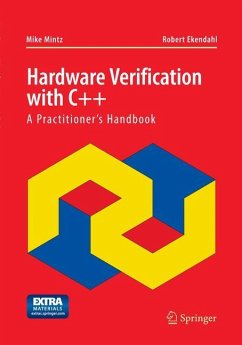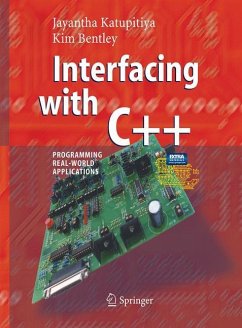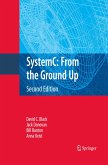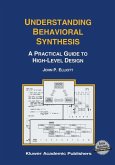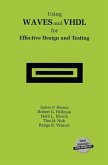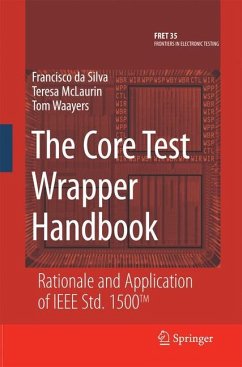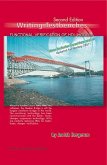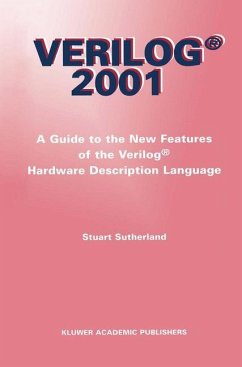For Further Reading . . . . . . . . . . . . . . . . . . . . . . . 41 C h a p t e r 4 : A L a y e r e d A p p r o a c h . . . . . . . . . . . 43 Overview . . . . . . . . . . . . . . . . . . . . . . . . . . . . . . . 44 A Whiteboard Drawing . . . . . . . . . . . . . . . . . . . . . . 46 An "ends-in" approach. . . . . . . . . . . . . . . . . . . . . 47 Refining the whiteboard blocks . . . . . . . . . . . . . . . 47 The "Common-Currency" Components . . . . . . . . . . . 48 The Interface Layer in Detail. . . . . . . . . . . . . . . . . . 49 The wire layer . . . . . . . . . . . . . . . . . . . . . . . . . . 50 The agent layer . . . . . . . . . . . . . . . . . . . . . . . . . 52 The transaction layer . . . . . . . . . . . . . . . . . . . . . 53 The Top-Layer Components . . . . . . . . . . . . . . . . . . 54 What is a Test? . . . . . . . . . . . . . . . . . . . . . . . . . . . 56 The Test Component . . . . . . . . . . . . . . . . . . . . . . . 58 The Test Irritator . . . . . . . . . . . . . . . . . . . . . . . . . 60 A Complete Test . . . . . . . . . . . . . . . . . . . . . . . . . . 61 Summary . . . . . . . . . . . . . . . . . . . . . . . . . . . . . . . 63 For Further Reading . . . . . . . . . . . . . . . . . . . . . . . 63 Part II: An Open-Source Environment with C++ . . . . . . 65 C h a p t e r 5 : T e a l B a s i c s . . . . . . . . . . . . . . . . . . . 67 Overview . . . . . . . . . . . . . . . . . . . . . . . . . . . . . . . 68 What Teal provides . . . . . . . . . . . . . . . . . . . . . . . 68 Teal's similarity to HDLs . . . . . . . . . . . . . . . . . . . 69 A tiny but complete example . . . . . . . . . . . . . . . . 69 Teal's Main Components. . . . . . . . . . . . . . . . . . . . . 71 Using Teal . . . . . . . . . . . . . . . . . . . . . . . . . . . . . .73 Initialization . . . . . . . . . . . . . . . . . . . . . . . . . . . 73 Your C++ test . . . . . . . . . . . . . . . . . . . . . . . . . . . 74 Registers . . . . . . . . . . . . . . . . . . . . . . . .. . . . . . 74 A P r ac titioner 's Handboo k ix Contents Creating registers . . . . . . . . . . . . . . . . . . . . . . . 74 Working with a reg or vreg . . . . . . . . . . . . . . . . . . 75 Logging Output . . . . . . . . . . . . . . . . . . . . . . . . . . . 76 Using Test Parameters . . . . . . . . . . . . . . . . . . . . . . 79 Accessing Memory . . . . . . . . . . . . . . . . . . . . . . . . . 81 A memory note example . . . . . . . . . . . . . . . . . . . 82 Constrained Random Numbers . . . . . . . . . . . . . . . . . 84 Required initialization . . . . . . . . . . . . . . . . . . . . . 84 Using random numbers. . . . . . . . . . . . . . . . . . . . . 84 Working with Simulation Events and Concurrency . . . . 86 Summary . . . . . . . . . . . . . . . . . . . . . . . . . . . . . . . 88 For Further Reading . . . . . . . . . . . . . . . . . . . . . . . 88 Chapter 6: Truss: A Standard Verification F r a m e w o r k . . . . . . . . . . . . . . . . . . . . . . . . . . . . . . 91 Overview . . . . . . . . . . . . . . . . . . . . . . . . . . . . . . . 92 General Considerations . . . . . . . . . . . . . . . . . . . . . 93 Using a language other than C++ . . . . . . . . . . . . . . 93 Keeping it simple . . . . . . . . . . . . . . . . . . . . . . . . 94 Major Classes and Their Roles . . . . . . . . . . . . . . . . .
From the reviews:
"I was very pleasantly surprised when I ... curled up with a book titled Hardware Verification with C++ ... . Published by Springer, this ... is a gem. ... the authors wrote with an easy-going style that makes the book a pleasure to read. ... Very few people can write a good book. Mike and Robert are firmly established in this ... category. ... I learned more about verifying hardware using C ++ ... with this book than I have in the last few years!" (Clive Maxfield, Programmable Logic Design Line, February, 2007)
"I was very pleasantly surprised when I ... curled up with a book titled Hardware Verification with C++ ... . Published by Springer, this ... is a gem. ... the authors wrote with an easy-going style that makes the book a pleasure to read. ... Very few people can write a good book. Mike and Robert are firmly established in this ... category. ... I learned more about verifying hardware using C ++ ... with this book than I have in the last few years!" (Clive Maxfield, Programmable Logic Design Line, February, 2007)

